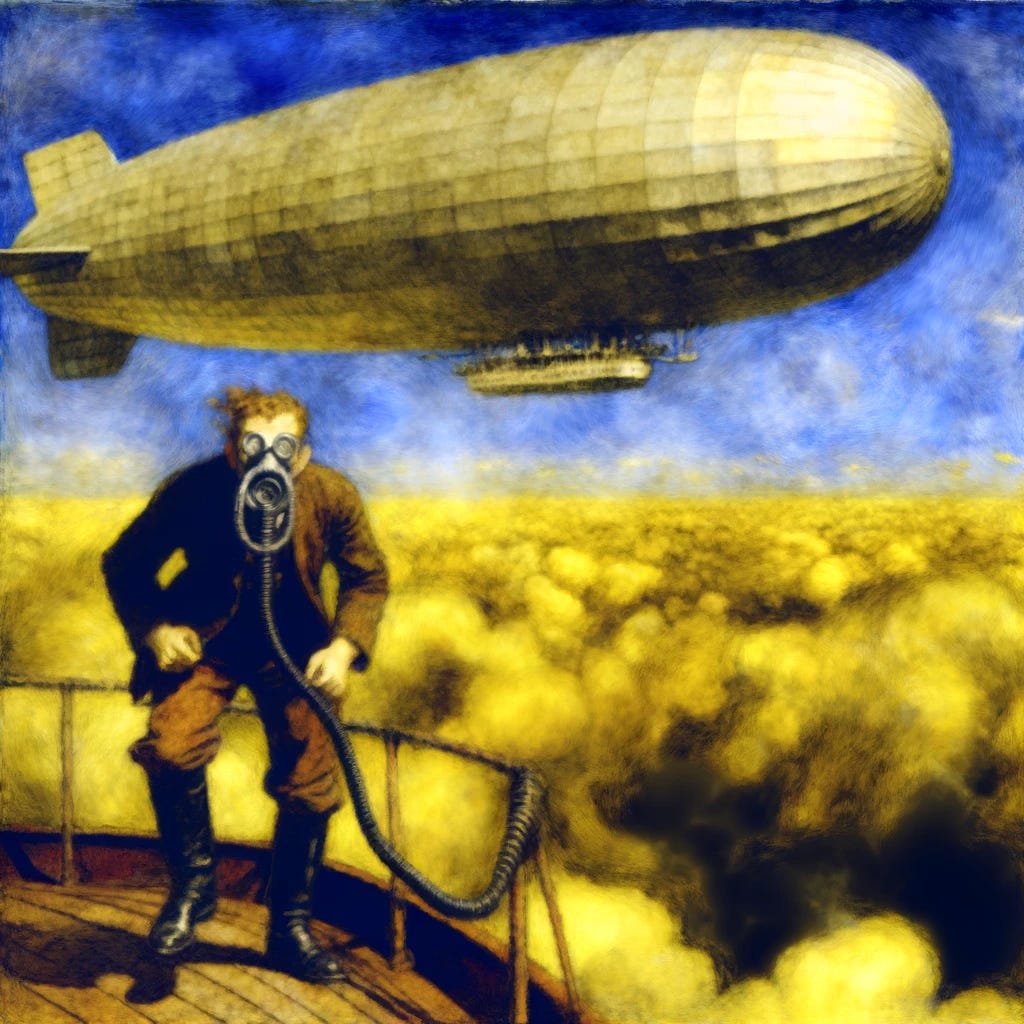Devil's Airship
What secrets lay beneath the clouds?
On the 100th day of Annual Day, the airship hung motionless in the Venusian sky. The sky was clear and blue, and the sun shone with unnatural brilliance. Neville Kurtz paced the outer deck. He was reaching the maximum period for his daily outdoor exposure, as his face was scrubbed raw from the acidic nature of the unbreathable air. His oxygen mask fit tightly, and each breath was an effort, as power aboard the V.A.S. New Beagle was being conserved due to the loss of a solar panel in the last electrical storm. He turned, and looked down on an interminable vista of dense, evil-looking yellow clouds. Every so often, lightning would flash, snaking into the churning depths of the aerial sea.
---Venus, known for its hellish landscape, indeed, was once like Earth. Seas once filled its lowlands, and life flourished for billions of years. However, it must have perished in the transformation into what Venus has become today. The only thing that lives there now is Phosphjnes perversis, that nasty little fellow whose colonies foul up air recyclers, as every astronaut knows----
That lecture in Biochemical Processes One of the Antarctic Academy of Spaceflight was the first that Neville Kurtz learned of what was to become his life’s work. He, at long last, had convinced Centauri Star Lines to fund a one-year voyage to determine the ways and weaknesses of Phosphjnes perversis, and to end its ravages once and for all. Phosphjnes perversis, known as the Bug to all who work on space liners, had first been detected in the early decades of the twenty-first century. At the time, it was considered a harmless curiosity, but soon, it was turning up in the air recyclers on all manner of spaceflight missions, with sometimes fatal consequences.
The New Beagle was a vehicle unlike any hitherto constructed. Suspended from a balloon filled with common nitrogen, it roamed the skies of Venus at the cloud-top layer, one of the few places in the Solar System outside of Earth survivable by man in his shirt sleeves. The New Beagle was the home of over one hundred scientists, technicians, and maintenance workers, and was a floating lab for the study of atmospheric Venusian microbes, above all, the species Phosphjnes perversis. In addition, it had a probe, connected to an immense carbon nanotube cable, which would be sent down the twenty miles to the Venusian surface to gather samples.
In the beginning of the mission, nothing unusual was detected, and the crew slowly settled into the routine of analyzing and sequencing the microbes. Oddly, the biologists could not find any logical way in which the various strains of Phosphjnes perversis could have evolved from each other. One day, however, radar detected odd and regular shapes on the Venusian surface. Neville Kurtz ordered a sample to be collected from this region at once.
‘Sample approaching in 10 minutes,’ squawked a crewman through the radio.
Slowly but surely, the box rose up the carbon cable. Soon, it bumped against the side of the airship with a grating jolt.
There were four pyramids in the package, still glowing a dim red from the intense heat of the Venusian surface. They were engraved with a strange script, which, although utterly unfamiliar to Neville Kurtz, was strangely logical, and followed precise mathematical patterns. A bas-relief of vaguely reptilian upright creatures
Keep reading with a 7-day free trial
Subscribe to Tom Swift to keep reading this post and get 7 days of free access to the full post archives.


